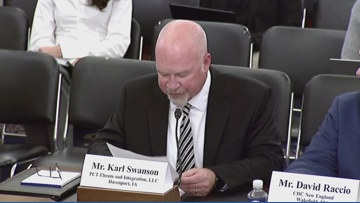Analysis of Low-Cost Educational Franchises and Their Contribution to Sustainable Development Goals
Introduction: Meeting Global Educational Demands
A consistent and growing global demand for educational services and supplemental support presents significant opportunities for scalable business models. Franchising, particularly through low-cost investment opportunities, offers a viable mechanism to address this demand. This approach directly aligns with the United Nations’ Sustainable Development Goals (SDGs), primarily contributing to the advancement of SDG 4 (Quality Education) by expanding access to learning resources.
Core Alignment with SDG 4: Quality Education
Low-investment educational franchises are instrumental in advancing the targets of SDG 4, which aims to ensure inclusive and equitable quality education and promote lifelong learning opportunities for all. Their contributions include:
- Enhancing Inclusivity and Equity: By establishing learning centers in diverse communities, these franchises make supplemental education accessible to a broader range of students, helping to reduce educational disparities.
- Promoting Lifelong Learning: Many franchises offer services that extend beyond traditional K-12 curricula, providing skills development and enrichment programs for learners of all ages.
- Improving Educational Outcomes: They provide targeted support that supplements formal schooling, helping students achieve foundational literacy and numeracy and improving overall academic performance.
Fostering Economic Growth and Reducing Inequalities (SDG 8 & SDG 10)
The operational model of low-cost franchises also supports other key Sustainable Development Goals. By making business ownership more attainable, these enterprises contribute to decent work, economic growth, and the reduction of inequalities.
- Promoting Decent Work and Economic Growth (SDG 8): These franchises create local employment opportunities for educators, administrators, and support staff. They foster entrepreneurship by lowering the financial barriers to starting a business, thereby stimulating local economies.
- Reducing Inequalities (SDG 10): The accessibility of a low-cost franchise model enables a more diverse group of entrepreneurs to enter the market. This democratization of business ownership can contribute to reducing income and opportunity inequalities within and among communities.
Conclusion: A Sustainable Model for Educational and Economic Advancement
In summary, the proliferation of educational franchises with lower initial investments presents a powerful, market-driven solution that aligns with critical global development objectives. This model not only addresses the escalating demand for quality educational support (SDG 4) but also functions as a catalyst for inclusive and sustainable economic growth (SDG 8) and reduced inequalities (SDG 10), making it a significant contributor to the broader 2030 Agenda for Sustainable Development.
Analysis of SDGs in the Article
1. Which SDGs are addressed or connected to the issues highlighted in the article?
-
SDG 4: Quality Education
The article directly addresses this goal by focusing on the “consistently growing” “demand for education services and support.” This highlights the central role of education in society and the need to meet this demand with accessible options.
-
SDG 8: Decent Work and Economic Growth
This goal is connected through the article’s emphasis on business opportunities within the education sector. By highlighting “franchises with lower initial investments,” the text points to the promotion of entrepreneurship, job creation, and the growth of small and medium-sized enterprises, which are key components of economic growth.
2. What specific targets under those SDGs can be identified based on the article’s content?
-
Target 4.3: Ensure equal access for all women and men to affordable and quality technical, vocational and tertiary education, including university.
The article’s mention of “education services and support” can be interpreted as including supplementary education, tutoring, and skills training that help individuals access and succeed in various forms of post-secondary education. The focus on making these opportunities less “cost-prohibitive” aligns with the “affordable” aspect of this target.
-
Target 8.3: Promote development-oriented policies that support productive activities, decent job creation, entrepreneurship, creativity and innovation, and encourage the formalization and growth of micro-, small- and medium-sized enterprises…
The article directly relates to this target by discussing “franchises with lower initial investments.” Franchising is a model that promotes entrepreneurship and the growth of small enterprises. Making the initial investment lower encourages wider participation in business ownership, directly supporting this target.
3. Are there any indicators mentioned or implied in the article that can be used to measure progress towards the identified targets?
-
Implied Indicator for Target 4.3: Participation rate of youth and adults in formal and non-formal education and training.
The article states that the “demand for education services and support is consistently growing.” This growing demand is an indirect reference to the participation rate. The success and proliferation of education franchises could be used as a proxy measure of the private sector’s role in increasing participation in non-formal education and training.
-
Implied Indicator for Target 8.3: Number of small and medium-sized enterprises (franchises) created.
The article’s focus is on “top franchises with lower initial investments.” An implicit indicator of progress towards Target 8.3 would be the number of such franchises that are established. A lower investment barrier is intended to increase the rate of new business creation, which is a measurable outcome.
4. SDGs, Targets and Indicators Table
| SDGs | Targets | Indicators (Implied from Article) |
|---|---|---|
| SDG 4: Quality Education | Target 4.3: By 2030, ensure equal access for all women and men to affordable and quality technical, vocational and tertiary education, including university. | The “consistently growing” demand for education services, which can be measured by the participation rate of youth and adults in formal and non-formal education and training. |
| SDG 8: Decent Work and Economic Growth | Target 8.3: Promote development-oriented policies that support productive activities, decent job creation, entrepreneurship… and encourage the formalization and growth of micro-, small- and medium-sized enterprises… | The number of new businesses created, specifically the number of education “franchises with lower initial investments” that are established. |
Source: 1851franchise.com







